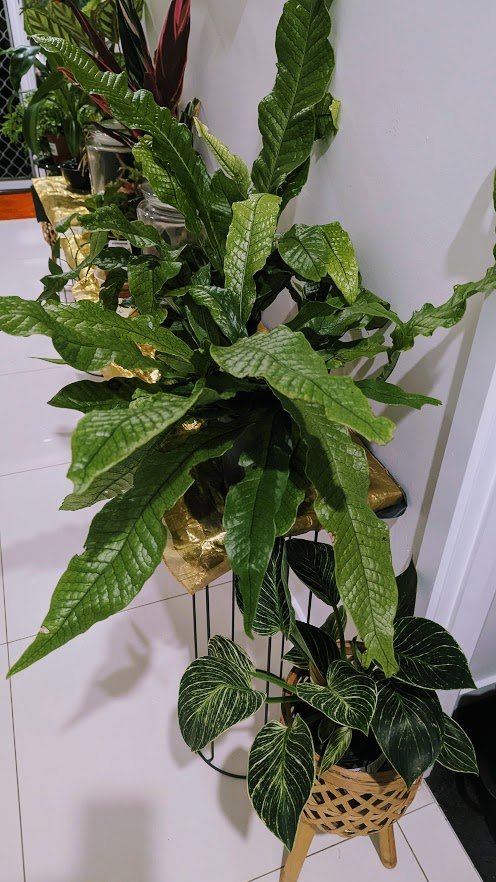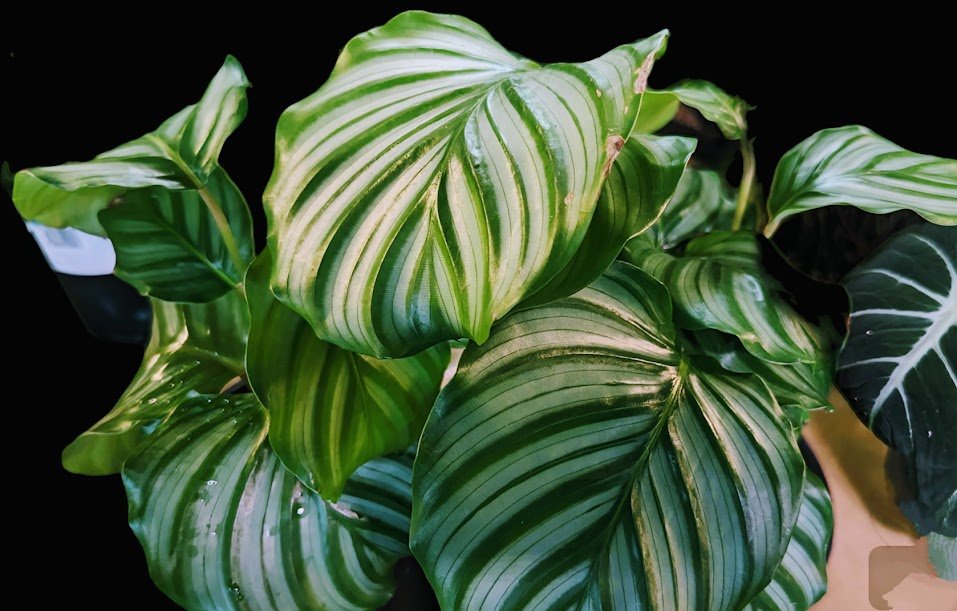 Image 1 of 3
Image 1 of 3

 Image 2 of 3
Image 2 of 3

 Image 3 of 3
Image 3 of 3




Crocodile Fern $20
Crocodile Fern (Microsorum musifolium 'Crocodyllus'), named for its unique, textured leaves that resemble crocodile skin:
Very Easy care.
In 14cm pots…Very well established
Crocodile Fern (Microsorum musifolium 'Crocodyllus'), named for its unique, textured leaves that resemble crocodile skin:
Very Easy care.
In 14cm pots…Very well established
Crocodile Fern (Microsorum musifolium 'Crocodyllus'), named for its unique, textured leaves that resemble crocodile skin:
Very Easy care.
In 14cm pots…Very well established
🌿 Crocodile Fern Care Guide
(Microsorum musifolium 'Crocodyllus')
Light
Prefers bright, indirect light.
Can tolerate moderate shade—great for indoors or underplanting.
Avoid direct sun, which can burn the textured leaves.
Water
Keep soil evenly moist, but not soggy.
Water when the top 2–3 cm (1 inch) of soil feels dry.
Likes consistent moisture, but needs good drainage to avoid root rot.
Humidity
Loves high humidity (60%+).
Mist regularly, especially in dry climates, or use a humidifier.
Great in bathrooms or grouped with other humidity-loving plants.
Temperature
Thrives between 18–26°C (65–80°F).
Avoid temperatures below 15°C (59°F) and protect from drafts.
Soil
Use a rich, well-draining potting mix—a blend for ferns or tropicals with added orchid bark or perlite for airflow.
Ensure the pot has drainage holes.
Feeding
Feed monthly during spring and summer with a diluted balanced liquid fertilizer.
Reduce or skip feeding in autumn and winter.
Repotting
Repot every 1–2 years or when rootbound.
Ferns like being a little snug, so don’t over-pot.
Toxicity
Non-toxic to pets and people—safe for households with animals.
Common Issues
Brown tips = low humidity or inconsistent watering.
Yellowing leaves = overwatering or poor drainage.
Crispy edges = dry air or direct sun exposure.










